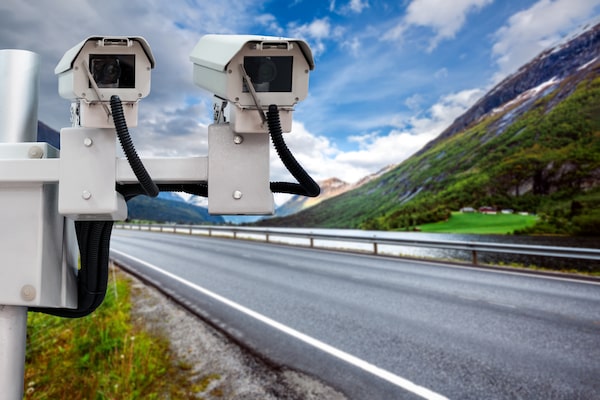
Starting in March 2020, Alberta cities will have to prove that photo radar is making roads safer in specific locations.Andrey Armyagov/iStockPhoto / Getty Images
Whenever I drive from Vancouver to Calgary, I only really start to relax once I cross the Alberta border.
I grew up in Alberta, and it’s nice to be home, but it’s also nicer driving in a province with photo radar.
You read that right. I like to drive fast, I hate getting speeding tickets, and yet I think photo radar should be everywhere.
Whenever I’ve driven in places with speed cameras – Stuttgart in Germany, Seoul in South Korea or St. Albert in Alberta – there’s been less speeding.
Especially in other countries, whenever I’ve seen photo radar signs, the cars around me go the same speed – the speed limit or just slightly over it.
There are fewer cars zooming in and out of lanes than on, say, Highway 401 in Toronto. Everybody going the same speed, more or less, makes rush hour a lot less stressful.
Sure, there are still bat-out-of-hell speeders, but generally, people drive slower because, like me, they’ve had tickets in the mail and don’t want another one.
How much slower people are going isn’t clear. There’s some evidence that photo radar keeps people from speeding. A 2017 study by University of Alberta researchers showed that the presence of photo-radar vans cut speeding by 19 per cent, even after the vans were gone.
That was in Edmonton, a city that’d already had photo radar for years.
Cash cow?
The biggest complaint against photo radar? It works too well at catching speeders.
Earlier this year, Alberta banned photo radar on highways if there wasn’t proof of safety concerns. Starting in March 2020, Alberta cities will have to prove that photo radar is making roads safer in specific locations.
It was part of a pre-election move by the then-NDP government to try to stifle complaints that photo radar is a cash cow. The NDP lost the election anyway.
Ontario and British Columbia both axed photo radar – Ontario in 1995 and B.C. in 2001 – as part of election promises.
While Alberta’s softening its rules, photo radar is making a comeback in other provinces. For instance, B.C. has started giving speeding tickets through red-light cameras, and Ontario is proposing new rules which would allow cities to use speed cameras in schools and community-safety zones. In both places, critics are calling the moves cash grabs.
But that’s the whole point of fines; they’re supposed to make you stop doing things. Getting a speeding ticket sucks. That’s the whole point.
And photo-radar tickets suck less than regular tickets. With photo radar, you don’t get pulled over, you don’t get demerits, and your insurance rates won’t go up.
In Alberta, a third-party report showed that photo radar generates about $220-million a year in revenue while reducing fatal collisions by 5.3 per cent.
Sure, there are times when speed traps are probably unfair, like when they’re placed on sections of highways just before speed limits go up, in order to catch people speeding up too early.
But generally, photo radar gets me in the habit of going the speed limit – or at least closer to it. When I see a sign warning of speed cameras, I assume I’ll get caught, so I slow down automatically (unless Waze has assured me that there isn’t a camera nearby). If anything, there should be more of them, and they should be mounted to light poles and overpasses, as they are in many parts of Europe.
Speed cameras force me to drive more safely, and I wish we had more of them back home, no matter how much cash they rake in.
Stay on top of all our Drive stories. We have a Drive newsletter covering car reviews, innovative new cars and the ups and downs of everyday driving. Sign up today.